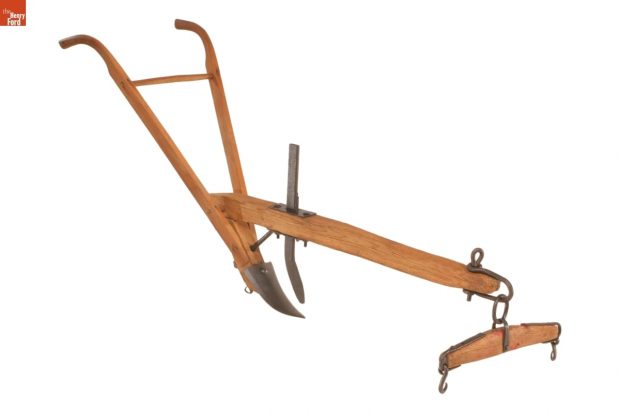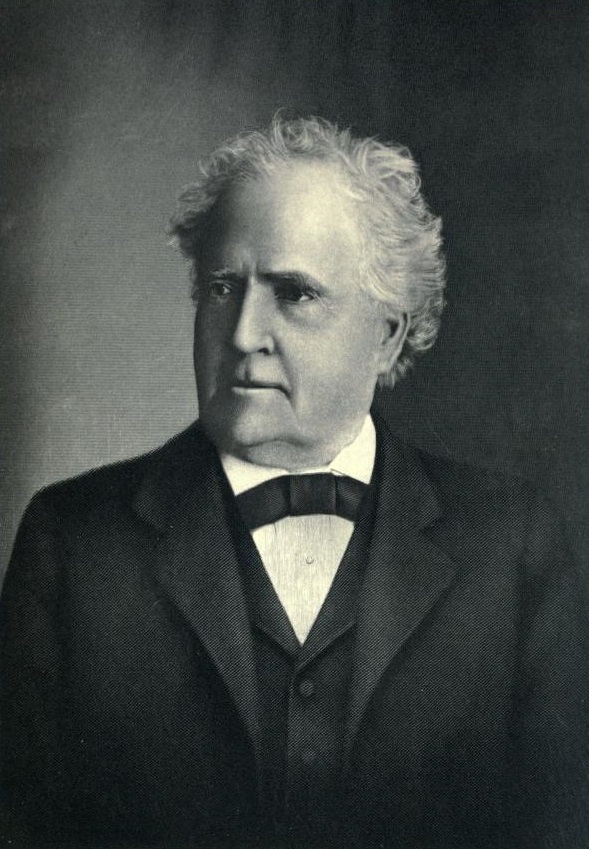Plows
Sep 2nd, 2018 by John Houghton
Early settlers of southern Indiana came mostly from the upland South of the United States, and brought with them a plow that was essentially a shovel blade pulled by a pair of oxen or by a horse. It was called a “jumping shovel” or “bull-tongue” plow. These made only a shallow furrow and would jump over obstacles: both advantages when only German immigrants took the trouble to pick their fields clear of rocks and tree roots.
Bull-tongue Plow, 1923, From the Collections of The Henry Ford Museum.
Gift of Robert L. Dunigan.
https://www.thehenryford.org/collections-and-research/digital-collections/artifact/207453
Settlers of northern Indiana, coming largely from the northern United States and from Europe, brought the moldboard plow, which cuts deeper into the soil than the shovel plow, and turns the earth upside down as it passes through. But the rich heavy soil of the midwest tended to stick to the wooden moldboard, requiring frequent stops. John Deere of Illinois (left), in 1837, and James Oliver, of South Bend, in 1857 (right), developed ways of mass-producing plows that used steel or iron for the moldboard as well as the ploughshare, largely eliminating the sticking problem and permitting deep plowing all across the Midwest.
John Deere, 1804-1886
public domain image c. 1914, from Wikimedia:
https://commons.wikimedia.org/wiki/File:John_Deere_portrait.jpg
John Deere plow, 1838, National Museum of American History
http://americanhistory.si.edu/collections/search/object/nmah_857013
James Oliver, 1823-1908
public domain image 1918, from
https://commons.wikimedia.org/wiki/File:Portrait_of_James_Oliver.jpg
Advertisement for Oliver Plow
Ann Arbor Argus, March 5, 1897






